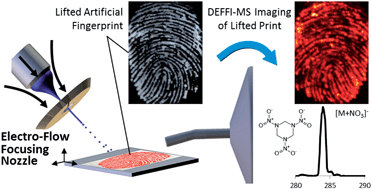Take a look at our new HOT articles just published in Analyst and free for you for the next couple of weeks:
Quantum dots in diagnostics and detection: principles and paradigms
T. R. Pisanic II, Y. Zhang and T. H. Wang
Analyst, 2014, Advance Article
DOI: 10.1039/C4AN00294F, Tutorial Review
Cotton fabric-based electrochemical device for lactate measurement in saliva
Radha S. P. Malon, K. Y. Chua, Dedy H. B. Wicaksono and Emma P. Córcoles
Analyst, 2014, Advance Article
DOI: 10.1039/C4AN00201F, Paper
Flow cytometric microsphere-based immunoassay as a novel non-radiometric method for the detection of glutamic acid decarboxylase autoantibodies in type 1 diabetes mellitus
Luciano L. Guerra, Aldana Trabucchi, Natalia I. Faccinetti, Ruben F. Iacono, Daniela B. Ureta, Edgardo Poskus and Silvina N. Valdez
Analyst, 2014, Advance Article
DOI: 10.1039/C3AN02243A, Paper
Enhanced Raman multigas sensing – a novel tool for control and analysis of 13CO2 labeling experiments in environmental research
Robert Keiner, Torsten Frosch, Tara Massad, Susan Trumbore and Jürgen Popp
Analyst, 2014, Advance Article
DOI: 10.1039/C3AN01971C, Paper
Simple sample processing enhances malaria rapid diagnostic test performance
K. M. Davis, L. E. Gibson, F. R. Haselton and D. W. Wright
Analyst, 2014, Advance Article
DOI: 10.1039/C4AN00338A, Paper
To view these article for free, please register for a free RSC account here
























 nal could be acurately recreated. SERS involves adsorbing tiny paint samples to metal nanoparticles, which enhances the Raman signal so trace amounts of the pigment molecules can be detected. Routine art analysis techniques like x-ray fluorescence scanning are unsuitable for this kind of paint, as they rely on elemental signatures from metals, without Dr Van Duyne’s developments the original colours envisioned by Renoir would remain unknown.
nal could be acurately recreated. SERS involves adsorbing tiny paint samples to metal nanoparticles, which enhances the Raman signal so trace amounts of the pigment molecules can be detected. Routine art analysis techniques like x-ray fluorescence scanning are unsuitable for this kind of paint, as they rely on elemental signatures from metals, without Dr Van Duyne’s developments the original colours envisioned by Renoir would remain unknown.


